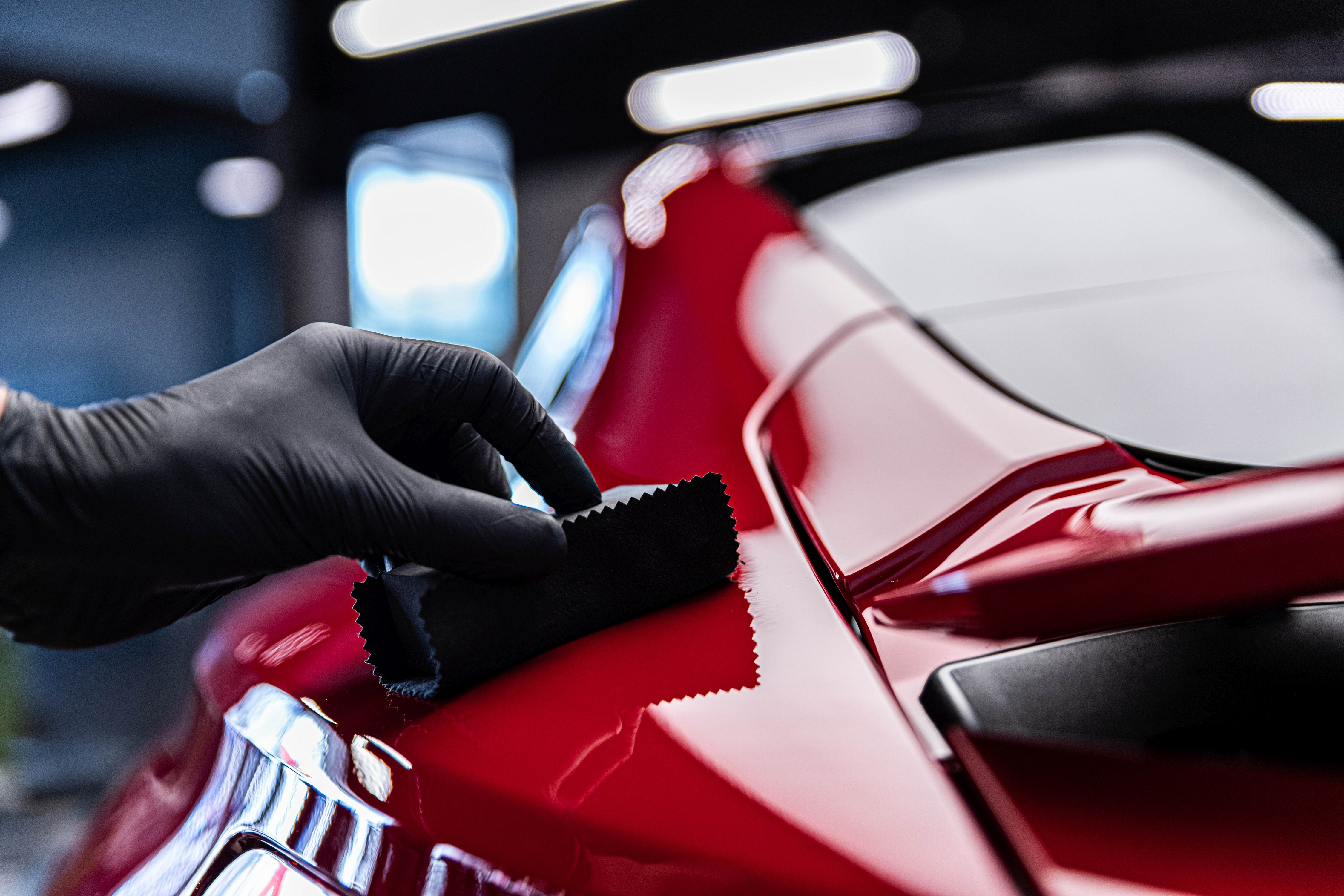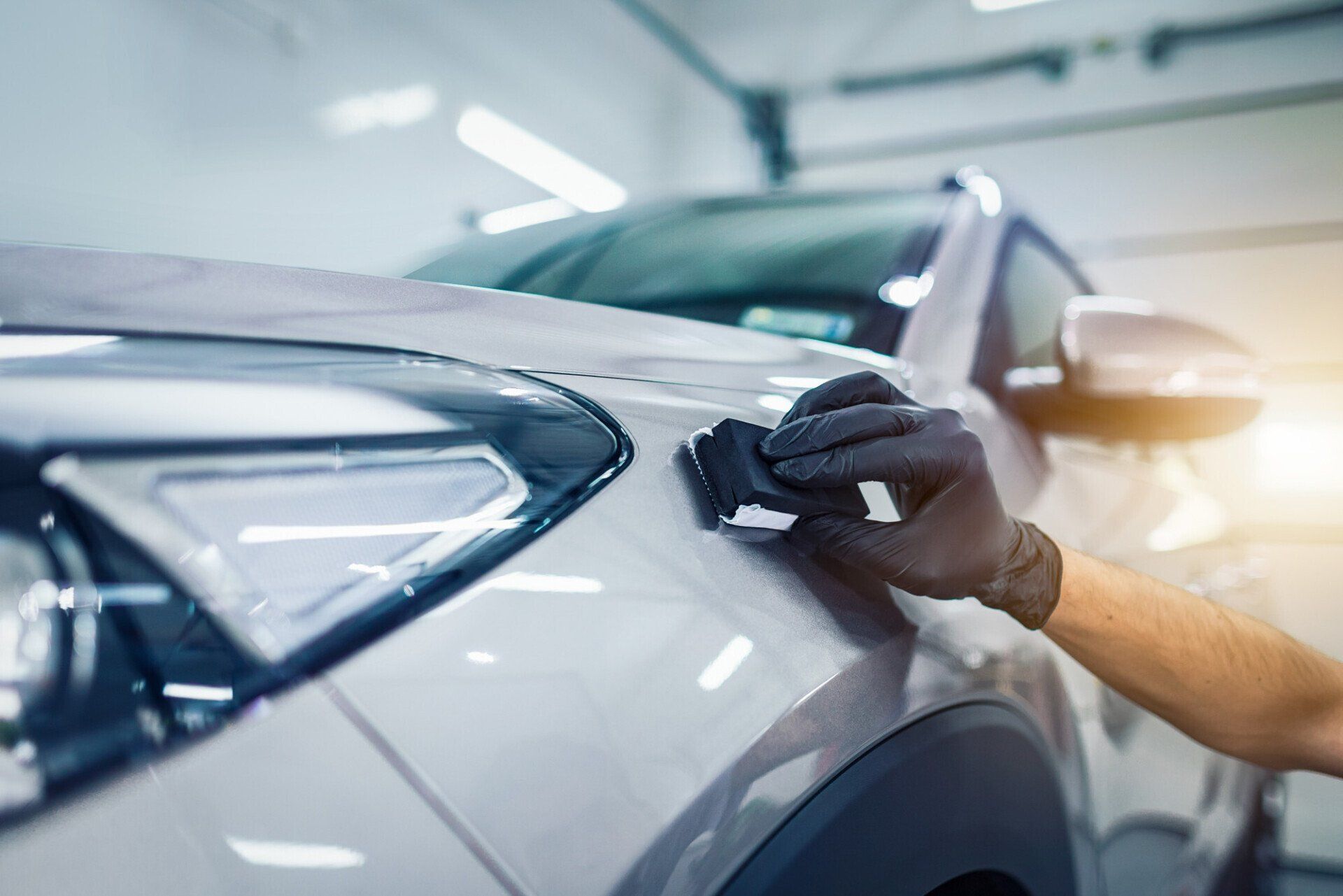The science behind Ceramic Coating Newark and how it works
Discovering the Scientific Research Behind Car Ceramic Coating and Its Safety Qualities
The science of car ceramic coating presents a remarkable research study in sophisticated auto defense. Made up mainly of silicon dioxide and polymers, these finishes create a robust bond with lorry paint. This interaction boosts resilience against ecological risks while supplying hydrophobic advantages. The complexities of exactly how these layers job and their long-lasting benefits continue to be less understood. Ceramic Coating Newark. Unloading these details exposes why ceramic finishes are ending up being a favored option for automobile treatment
What Is Ceramic Coating?
Ceramic coating is a liquid polymer that chemically bonds to the surface of a vehicle's paint. This advanced safety layer improves sturdiness and uses superior resistance to environmental variables. Unlike traditional wax or sealers, which supply temporary security, ceramic layers develop a resilient shield that can hold up against rough problems such as UV rays, acidic contaminants, and severe weather condition. When applied appropriately, the coating creates a hydrophobic surface, creating water to bead and slide off, which aids in preserving the car's sanitation. Furthermore, it supplies improved gloss and deepness to the paint, making the automobile show up more refined and lively. The application procedure typically involves complete surface preparation, consisting of cleansing and polishing, to assure peak bonding. Because of this, ceramic finishes are ending up being significantly prominent amongst car enthusiasts and those looking for to shield their financial investments, guaranteeing to preserve the automobile's aesthetic appeal while reducing the regularity of maintenance.
The Make-up of Ceramic Coatings
The complex solution of ceramic finishings mostly contains silicon dioxide (SiO2), which is originated from natural resources like quartz and sand. This key element offers the foundation for the coating's durability and protective top qualities. Along with SiO2, ceramic finishes typically consist of various polymers and additives that improve bond, adaptability, and resistance to ecological aspects. These substances work synergistically to create a robust barrier against impurities such as dirt, chemicals, and UV rays.Furthermore, some solutions integrate titanium dioxide (TiO2) or various other nanomaterials, which can enhance the coating's hydrophobic residential properties, resulting in improved water repellency. The accurate structure can vary considerably among manufacturers, impacting efficiency and durability. Inevitably, the mix of these components finishes in a safety layer that not just enhances the aesthetic charm of automobiles however likewise serves to prolong their lifespan by shielding the surface from potential damage.
Just How Ceramic Coatings Work
Recognizing just how ceramic layers work includes exploring their chemical structure, which contributes to their protective top qualities. The application process is vital for accomplishing ideal results, while longevity and longevity elements identify the coating's efficiency in time. With each other, these aspects highlight the benefits and performance of ceramic finishings for lorry defense.
Chemical Make-up Explained
While lots of car proprietors seek durable security for their vehicles, the chemical make-up of ceramic finishings plays an essential duty in their efficiency. These finishings primarily consist of silicon dioxide (SiO2), which is stemmed from all-natural minerals. This compound forms a strong bond with the vehicle's paint, developing a durable, safety layer. Additionally, numerous ceramic coatings have titanium dioxide (TiO2), improving their hydrophobic residential or commercial properties and resistance to UV rays. The presence of polysiloxanes can further enhance adaptability and resilience. Together, these elements contribute to the coating's ability to push back water, dust, and impurities, while also supplying a high-gloss finish. Comprehending this chemical structure helps car proprietors value the robust security offered by ceramic layers.
Application Refine Summary
Applying ceramic layers involves a thorough procedure that assures excellent bonding and defense for the automobile's surface. Extensive cleaning and purification of the car's exterior are performed to remove dirt, gunk, and previous waxes. This step validates that the surface area is devoid of contaminations that might prevent adhesion. Following this, the paint is often brightened to boost clarity and eliminate any kind of flaws. When prepared, the ceramic coating is used in small sections making use of an applicator pad, permitting uniform protection. The coating is then entrusted to cure, forming a strong chemical bond with the surface. Proper healing times and problems are essential, as they validate the coating attains its optimum performance and safety high qualities.
Longevity and Resilience Aspects
Ceramic finishes are created to supply lasting protection via their sophisticated chemical make-up, which develops a durable obstacle versus environmental pollutants. The durability of these coatings is influenced by variables such as the density of the application, the quality of the item, and the conditions under which the vehicle is revealed. High-quality ceramic coatings can last numerous years, standing up to scratches, UV rays, and chemical stains. Appropriate upkeep, consisting of routine cleaning and regular reapplication, can further improve longevity. In addition, environmental factors like environment and direct exposure to toxins can impact the lifespan of the coating. In general, when used and maintained properly, ceramic finishes supply remarkable sturdiness, making them a preferred choice for car enthusiasts looking for to maintain their vehicle's appearance.
Hydrophobic Characteristics and Water Repellency
Hydrophobic buildings are a characteristic Check Out Your URL of quality car ceramic finishes, substantially boosting the car's surface efficiency. These layers create a molecular bond with the car's paint, leading to a surface area that pushes back water successfully. When water enters into call with a ceramic-coated surface, it beads up and rolls off, decreasing the quantity of fluid that stays on the paint. This actions not only contributes to a visually pleasing look however additionally reduces the build-up of impurities such as dirt, grime, and roadway salts.The improved water repellency causes less complicated cleaning and maintenance, as less initiative is called for to get rid of unwanted compounds. Additionally, the hydrophobic nature of ceramic finishings assists in protecting against water areas, which can mar the surface of uncoated surface areas. On the whole, the unification of hydrophobic properties in ceramic finishings plays a vital duty in maintaining the automobile's excellent look while streamlining upkeep.
Defense Versus Scratches and UV Damage
Car ceramic finishings use substantial defense versus scratches and UV damage. The scrape resistance device develops a sturdy layer that soaks up impacts, while the UV securing benefits help preserve the automobile's paint integrity over time. Together, these attributes contribute to a longer-lasting and aesthetically appealing coating.
Damage Resistance Device
Utilizing innovative technology, ceramic finishings give a robust shield against scrapes and UV damage, boosting the longevity and appearance of car surfaces. The scratch resistance mechanism of these finishes is credited to their one-of-a-kind molecular structure, which forms a sturdy bond with the lorry's paint. This bond develops a hard, protective layer that can soak up impacts and resist abrasions. Additionally, the smooth surface of the coating minimizes friction, making it challenging for contaminants to stick and trigger scratches. The chemical composition of ceramic finishings often consists of nanoparticles that enhance the protective layer, additional boosting its durability. Consequently, cars treated with ceramic visit our website layers exhibit substantially improved scratch resistance contrasted to traditional wax or sealers, making sure an immaculate surface with time.
UV Shielding Benefits
The protective top qualities of ceramic finishings extend past scratch resistance to include significant UV shielding advantages. These coatings develop a robust barrier that mirrors damaging ultraviolet rays, safeguarding the lorry's paint and underlying materials. Long term exposure to UV radiation can result in fading, oxidation, and degeneration of the paint coating. By incorporating ceramic coverings, car owners can effectively reduce these dangers, protecting the visual charm and stability of their automobiles. Additionally, the UV blocking residential or commercial properties add to enhanced long life, decreasing the frequency of repainting and upkeep. Eventually, the integration of ceramic layers provides a complete option for safeguarding automobiles from the destructive effects of sunlight direct exposure, guaranteeing a sustained, vivid appearance in time.
The Durability and Upkeep of Ceramic Coatings

Often Asked Questions
Can Porcelain Coating Be Applied to Any Kind Of Kind Of Automobile?
Ceramic coating can be applied to numerous sorts of vehicles, consisting of vehicles, trucks, and motorcycles. Surface preparation and compatibility with details materials are crucial for ideal adhesion and performance of the coating.
Just How Much Does Ceramic Coating Generally Price?
Ceramic coating typically costs between $500 and $2,000, depending on variables such as car dimension, coating quality, and expert application. The financial investment can provide long-lasting protection and improve the car's look in time.

Is Professional Application Required for Finest Results?
The requirement of specialist application typically depends upon preferred results. Specialists typically assure appropriate surface prep work and application techniques, leading to ideal bonding and durability of the coating, which might be testing for inexperienced individuals to accomplish.
Can Ceramic Coatings Be Gotten Rid Of or Repaired?
Ceramic finishes can be removed or fixed, though the process may need details solvents or techniques - Ceramic Coating Newark. Correct elimination is vital to stay clear of damage to the underlying surface, emphasizing the significance of professional help for perfect outcomes
Just How Does Porcelain Coating Contrast to Standard Wax?
The comparison in between ceramic coating and traditional wax reveals that ceramic finishes use remarkable resilience, enhanced defense versus ecological impurities, and longer-lasting sparkle, while wax calls for much more regular application and offers less general resistance to damages.